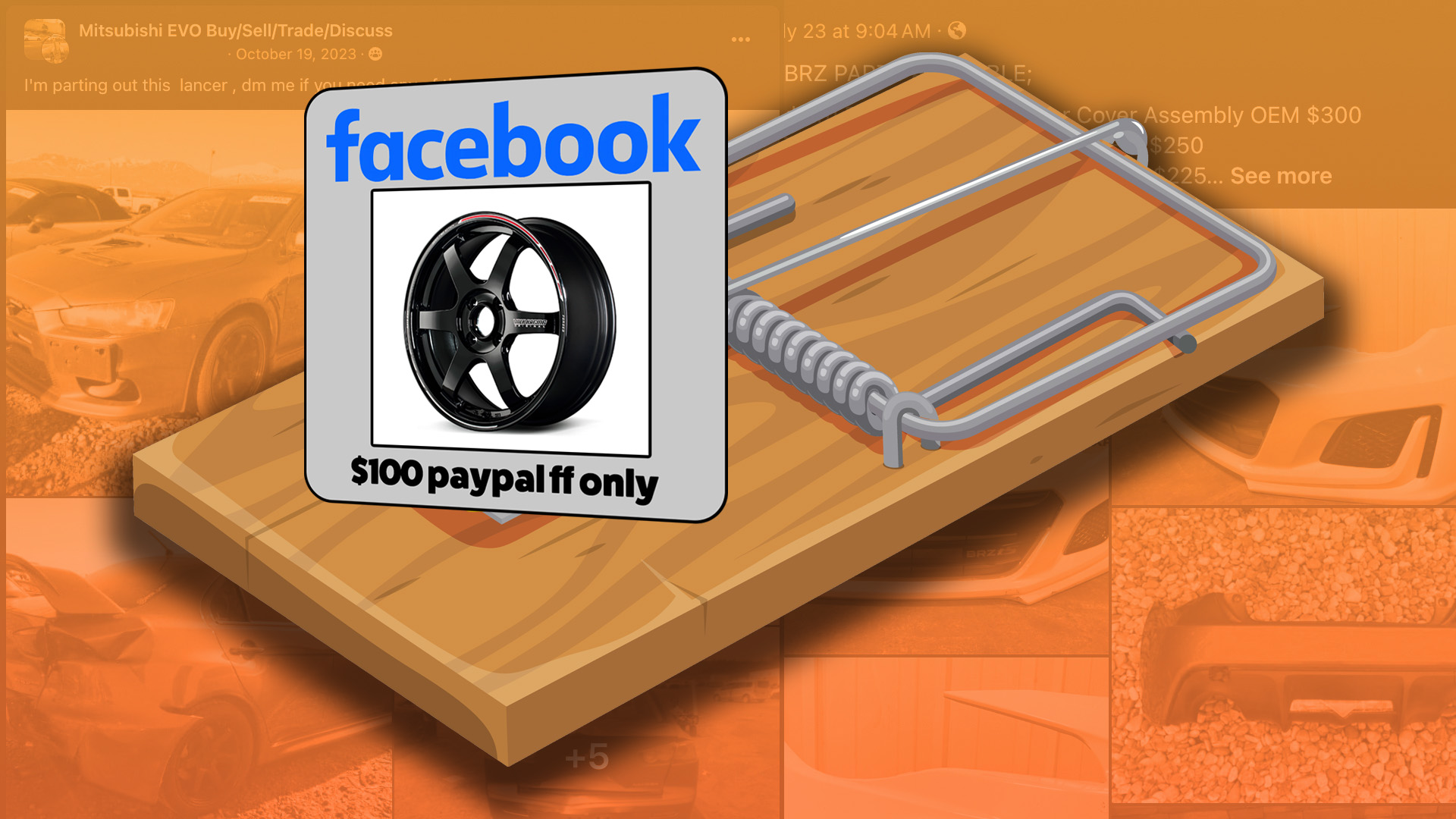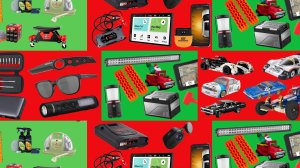

We may earn revenue from the products available on this page and participate in affiliate programs. Learn more ›
If you’re a member of the car community on Facebook, there’s a good chance you’ve seen your share of suspicious-looking ads for parts. Alarmingly, you may also see your fellow owners taking the bait, and almost certainly getting bilked for hundreds or even thousands of dollars. You may have even fallen for it yourself. But nobody has to ever again, because there are foolproof ways of spotting and avoiding these scams—even if sounding the alarm on them isn’t so easy.
There are three main ways scammers trawl Facebook looking for marks, and they tend not to rely on fooling the general public through Marketplace. Rather, they target model-specific groups, advertising part-outs of entire cars, selling in-demand components individually, or directing people to other pages or private messages where the scam can be set up. There are plenty of red flags between you and losing your money though, and they begin with the post itself.

On parting-out scams, it’s common to see comments disabled, which prevents people from ringing the alarm. They’ll sometimes leave fake likes or favorable comments from their own or puppet accounts, which real people can only dilute with less favorable reactions of their own. The posts often leave out the car’s location, which would help with estimating shipping or facilitating local pick-up, or are vague about what’s available. The photos are also important to pore over, as many scam posts use pictures of a car that’s only lightly damaged. You wouldn’t expect a part-out if the car can clearly be fixed and sold for more money and less effort than parting out requires. The example above is particularly lazy, showing two entirely different cars.
Usually, these pictures are stolen from elsewhere on social media, or just ripped off sites like Copart—these are recognizable by being taken in a salvage yard, and being of particularly low resolution. Scammers will often hide the car’s license plate to disguise their stolen photos, too. But Tineye is a fairly reliable source for tracking down the original photos if they’re stolen from a real salvage yard. It doesn’t work every time, but if you see dozens of results, you know something’s fishy.



Other times, when single parts are the subject of the sale, they’ll list high-demand parts or accessories below market price. Sometimes, they may directly court targets in the comments of a post seeking said part. The eager buyer will then be led to the private messages of that account or to a page for a fake business, which then conducts the scam. Fortunately, spotting both kinds of these accounts is pretty easy.
Scammers will usually post from new accounts with few friends or photos, sometimes with misspelled or strangely worded names. Our friends “Robert Grab Travino” and “Jo Jo” are two good examples, and I’ve seen a “Micheal” or two. Sometimes, they’ll pretend to be a retailer or salvage yard, and buy hundreds or thousands of fake followers. But they’ll often have no meaningful post history, minimal interactions on posts, and a lack of contact info or an address. Sometimes they’ll give a fake address, or one belonging to another business as in the case of Express Car Parts above—it actually belongs to an RV parts store.
Another giveaway is when a page sells parts specifically for enthusiast vehicles. The majority of cars that fill real junkyards are everyday commuter cars, with stuff like the Ford Bronco and Dodge Challenger accounting for but a small minority of what’s on the lot. Real salvage yards are just as glad to sell you a Toyota Camry dashboard as they are a Hellcat motor, and you can assume the people working there know a Hellcat engine is worth a pretty penny. Mind you, there are real junkyards focused on parting out single makes and models of enthusiast vehicles, but they’re few in number and generally well-known within a car’s community. What we’re seeing is scammers casting their nets as widely as possible before their accounts are banned or deleted.




If all of these check out, there are still a few final steps to take if you’re uncertain. Ask for a photo of the part you want to buy with a piece of paper with your name and today’s date on it, so the seller can prove they have it in their possession. Also, be wary of payment methods that don’t have buyer protection, like Zelle, Cash App, wire transfers, or PayPal’s “friends and family” function.
With all this in mind, you’re practically guaranteed to not be screwed out of your money. Unfortunately, Facebook’s hands-off moderation policies allow scams like these in the first place, as they often stay up long enough to trick someone. But for the time being, it’s the reality of the ultra-accessible social media environment, where accounts are disposable and paper trails can be tossed into the wind. Your best defense is your own skepticism—caveat emptor, as they say.
Got a tip or question for the author? You can reach them here: james@thedrive.com
